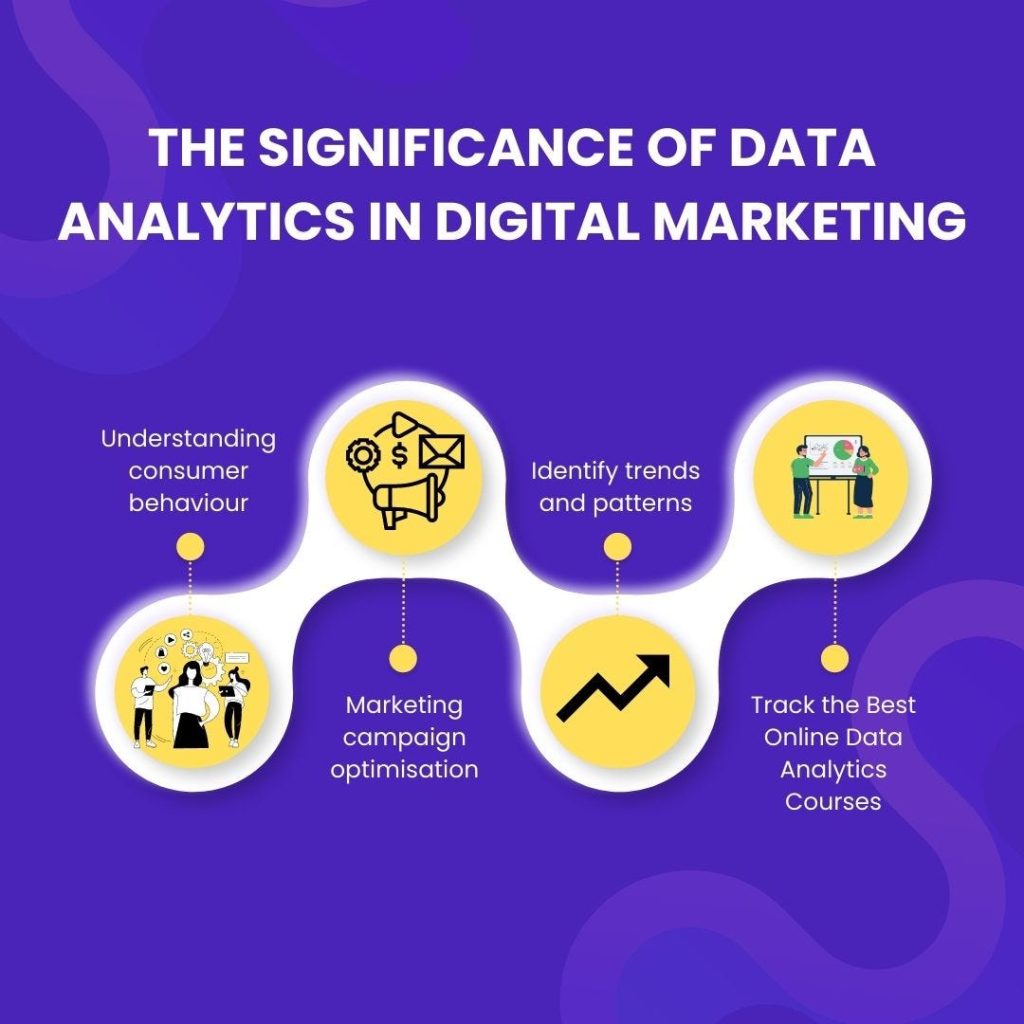The Way of Using Data Analytics to make Digital Marketing Campaigns Successful
Knowing that in the digital environment, where marketing competitor rates are quite high, data analytics is no longer the asset, but the necessity of creating effective marketing campaigns. Using data in an intelligent way, marketers can crack the behavior code of customers, refining targeting, executing real-time optimisation and maximising returns on investment (ROI). This is the way you can use data analytics to get the power of digital marketing.

1. Know Your Readers (a Level Deeper)
The key to any effective campaign is based on audience insights. Marketers have access to demographic information, behavioural trends, and material desires through the use of analytics such as Google analytics, CRM dashboards and social media analytics. this knowledge can assist you in developing hyper-targeted buyer personas and learn who your audience is, and what they actually want, resulting in personal experiences and better engagement.
2. Precision Targeting Segment
Audience segmentation, which involves categorizing customers into segments based on their attributes such as demographic, behavior and interests will help you deliver the right message to the right person at the right time. Brands create highly targeted campaigns that are specific to the needs and preferences of a specific segment with the help of data analytics, which improves the rate of conversion and brand loyalty.
3. Optimize Analytics in Content Strategy
Statistics provide you with insights on what exactly connecting people. It is possible to determine successful topics and formats by observing the indicators of success (page views, engagement rates, social sharing and so on). Be creative with what is successful, set your content timetable to the peak of the audiences, and kill the stuff that is not doing it. This evidence-based methodology guarantees that your information is consistently cooked to have a big effect.
4.Real Time Monitor and Optimize
Keep monitoring key performance indicators (KPIs) click-through rate (CTR), conversion rates, and sales through analytics tools. You can make agile changes in real-time: reallocate the ad spend in the channels that perform best, modify messages that do not resonate, and conduct A/B tests to determine the most effective creative approaches. This closed loop cycle avoids unwarranted expenditure and also enhances outcomes in the long run.
5. How to maximize ROI and Resource Allocation
With data analytics, it reveals what marketing will provide the best results. Monitoring cost-per-acquisition, lifetime-value, and ROI of various campaigns may help to be unhesitating to triple down on the most viable channels. It will imply wiser budgeting and an emphasis on the strategies that have been proven to reinforce conversion and growth
6. Forecast the Trends and Customer Behaviour
An enhanced analytics by machine learning and predictive modeling allows you to predict the market trends and plan ahead on how consumers would act. This proactive orientation enables the marketers to anticipate change, adapt easily and make a rapid shift in strategy and introduction of campaigns that may be in tandem with the market-direction and your customers-direction.
7. Construct Unique Customer Journey
Having a fully connected and personalized customer experience journey can be done by analyzing data on all digital touchpoints, such as social engagement to how a customer used a web page. Data can bring energy and drive retargeting advertisements, tailored product suggestions, personalized emails, and just-in-time offers, all of which can stimulate increased engagement and loyalty.
8. Real-World Success Data-Driven Campaigns
A retailer in ecommerce was able to grow its conversions by 20% and 15 percent in revenues by subdividing clients and customizing suggestions .
One tech start-up analytically optimized app UX, and increased user retention by 30%.
The brands move with the dynamics of real time insight, such as how they can change their offers in the emails or enhancing viral trend, making their sales increase measurably.
Key Takeaways
- The best place to start is to make sure that you collect, and analyze the correct data regarding your goals.
- Segment and personalize your campaigns and target them.
- Trust real-time analytics to correct x and optimize.
- Be willing to learn and always testing, measuring, and getting something better.
- Improve your marketing plan by allowing actionable data and not assumptions.
- It has become critical that marketers embrace data analytics to create really connecting, conversion and scaling campaigns in the present dynamic digital marketplace.

